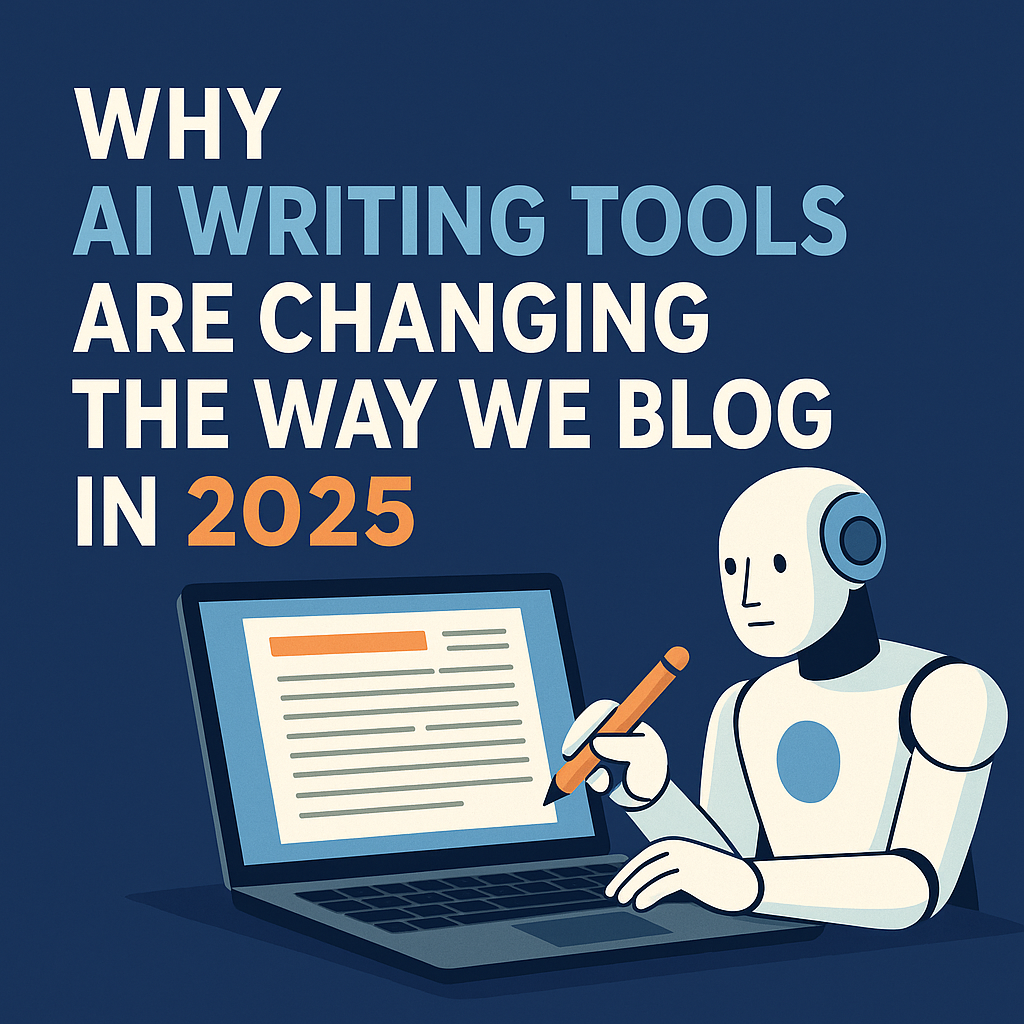Why AI Writing Tools Are Changing the Way We Blog in 2025
Back when I started my first blog, writing felt like a marathon. Every post meant hours of research, outlining, and rewriting until I was satisfied. Fast forward to 2025, and the game has changed dramatically. Thanks to AI Writing Tools, the process is faster, more organized, and surprisingly more enjoyable.
Now, let me be clear: these tools don’t magically turn you into a bestselling author overnight. What they do is eliminate the small, repetitive tasks that used to drain your energy. They help brainstorm, polish grammar, suggest keywords, and even reframe your ideas in ways you might not have thought of. In short, AI doesn’t take away the creative part—it gives you more space to focus on it.

From Blank Page to First Draft in Minutes
One of the hardest parts of blogging has always been the blank page. I’ve lost count of how many times I sat there, staring at the cursor, trying to come up with an opening line. With AI Writing Tools, that problem almost disappears.
For example, I once had to write an article about sustainable travel—a topic I wasn’t particularly familiar with. Instead of panicking, I asked an AI tool to generate a list of subtopics and a draft introduction. Within five minutes, I had a rough structure that gave me the confidence to start. Did I use the AI draft word-for-word? Of course not. But it gave me momentum, and sometimes that’s all a writer needs.
Consistency Is the Real Game-Changer
If you’ve ever tried to grow a blog, you know consistency is king. Google rewards sites that publish regularly, and readers come back when they know there’s always something new. The problem is, life gets in the way—jobs, families, and the usual creative burnout.
This is where AI Writing Tools shine the most. By speeding up the drafting process, they make it realistic to publish three or four posts a week without burning out. I personally went from posting once a week to three times a week just by using Jasper and Writesonic to handle outlines and introductions.
It’s not about letting AI do all the work—it’s about letting AI handle the “grunt work” so you can stay consistent.
SEO Without the Headache
Search engine optimization can feel like a mystery box to many bloggers. Which keywords should you use? How often should you repeat them? How do you structure your headings? In the past, I had to manually look up keyword trends and then try to weave them into my posts.
Now, AI Writing Tools like Writesonic or SurferSEO integrations make this painless. They suggest keywords based on real-time data, recommend optimal word counts, and even help draft meta descriptions. I’ll admit, the first time I saw an AI-generated meta description that was better than mine, I laughed—and then I used it.
Creativity Boost, Not Creativity Killer
Some critics argue that relying on AI will make writers lazy or kill originality. In my experience, it’s the opposite. By removing the repetitive parts of writing, AI actually frees up more energy for creativity.
For instance, I once used Copy.ai to generate different angles for a blog about remote work. It gave me perspectives I hadn’t considered, like the environmental benefits of fewer commutes. That spark turned into a section of the article that resonated strongly with readers. Without the AI’s suggestion, I might never have thought of it.
Accessibility for Beginners
When I first started blogging years ago, I had to learn grammar corrections, SEO basics, and formatting the hard way. For new writers in 2025, AI Writing Tools flatten the learning curve. Tools like Rytr or Grammarly integrate directly into your writing process, correcting mistakes in real time and suggesting better phrasing.
I’ve recommended these tools to friends who are just starting their blogs, and the feedback is always the same: “It feels like having a coach on my shoulder.” That’s exactly what beginners need—not a replacement for their voice, but guidance that helps them grow faster.
Real-World Example: My Blogging Workflow
Let me share how I personally use AI Writing Tools today:
- Jasper for building outlines and draft intros.
- ChatGPT for brainstorming headlines and FAQs.
- Grammarly for polishing tone and grammar.
- SurferSEO (paired with AI) for optimizing keywords and structure.
This mix lets me create posts that are not only easier to write but also optimized for visibility. The result? Higher traffic, more returning readers, and less stress on my end.
Final Thoughts
Blogging in 2025 is not about who can write the longest or most polished article by hand. It’s about who can consistently deliver value to their audience. And consistency is exactly what AI Writing Tools make possible.
If you’ve been skeptical, I’d encourage you to try at least one of these tools for your next post. Start small—use AI to generate a few headlines or draft an introduction. You’ll be surprised at how much lighter the process feels.
At the end of the day, your readers don’t care if you had AI help you brainstorm—they care about the value you deliver. And if AI Writing Tools can help you show up more often, with fresh ideas and polished writing, that’s a win for both you and your audience.